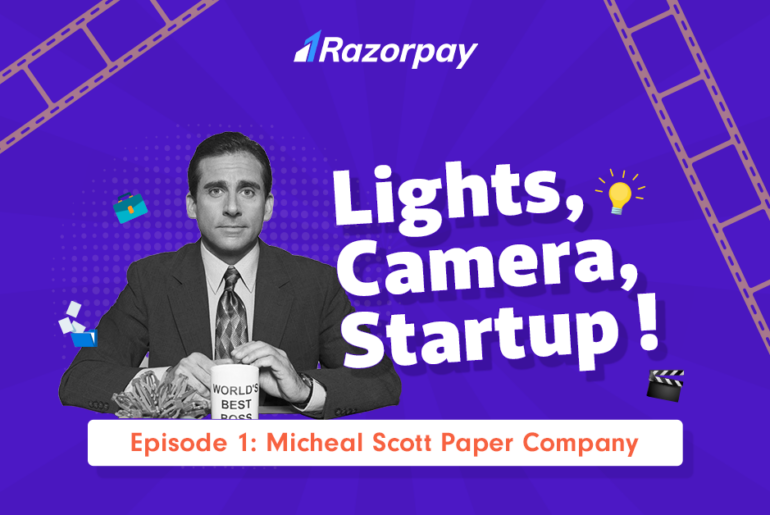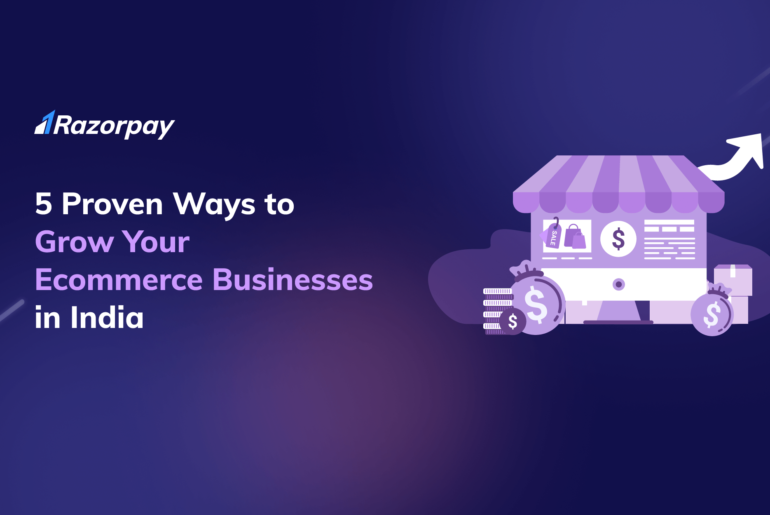Marketing is an important investment for any startup today. One of the key aspects that marketing addresses especially for startups is the discoverability problem.
Given the exponential growth of the internet, social media and digital solutions, many businesses believe that brand discovery and marketing is best solved through online channels; that marketing and advertising online has far surpassed the reach and benefits of traditional offline marketing.
While online marketing is important, offline marketing is still valuable in today’s day and age. In fact offline marketing can be a boon to startups, as they can be both cost effective and impactful, if done right.
What is offline marketing?
Offline marketing is the process of marketing a product or service through means other than the internet. This can include print ads, billboards, TV commercials, and more.
Brands that are able to deftly and consistently stitch both online and offline marketing together are the ones that are capable of creating maximum impact.
In fact, when customers are triggered through offline channels, it is not uncommon for them to check the brand online as well. Offline modes can be a way to effectively direct traffic to your brand’s online assets. Hence, offline marketing has the ability to yield the best results when combined with online marketing.
Marketers today spend significant effort and money attracting and sourcing leads through online channels that they often miss connecting with customers offline.
Here are some simple and effective offline marketing initiatives that startups can leverage:
1. Leverage product packaging for marketing
For brands that are associated with physical products, product packaging can be a good place to both market the product as well as drive product differentiation.
Creating unique, catchy product packaging is an art in itself and many brands leverage this channel to effectively market the product in order to leave a lasting impact in the minds of customers.
For instance, the popular beverage company, Paper Boat not only sells unique drinks, but also packages them in eye-catchy, easy to handle, eco-friendly pouches. The brand focusses on “simple, childhood memories, taking people back to the times when they played with paperboats”, so the packaging was made to portray this sentiment.
Specially designed pouches made from a substrate that felt like paper were designed; additionally the design was made in a shape that made the customer feel like he was squeezing a fruit while he was having the drink.

Source: elephantdesign.com
Including brand associations and personalization adds an element of quirk to the brand, making the audience easily recognise the brand. Small brands can also include personalized handwritten notes or include branded swag (like stickers, badges, bookmarks) in order to create a personal connection with customers.
2. Combine online and offline promotions
Promotions are one of the best ways to attract customers, especially for new brands. Promotional offers or vouchers in the form of special introductory discounts can be given away to people in order to drive them towards the brand.
Promotions are mostly done online today, however running offline promotions in the real world also has the benefit of easily attracting the right target audience. For instance a brand selling T- shirts can distribute discount vouchers around colleges.
Here is an interesting example of how WiFire, an app that automatically connects users to public WiFi hotspots ran an integrated promotion where the campaign was initiated online and the fulfillment was done offline:

Giving away small gift hampers for special occasions (like Christmas, New Year etc) to existing customers is also good way to trigger them to re-visit your online or physical store.
3. Partner with other businesses
In today’s crowded startup landscape, partnering with other associated businesses is a good way to connect with a larger portion of the target audience. Such strategic partnerships are a good way to ride on the partner’s brand loyalty and reach.
For instance, if you are a restaurant/food company, you can run joint marketing campaigns with delivery/logistics companies, as this will address a larger market – both people who order food and want it to be delivered. Such partnerships in fact are not restricted to offline areas alone and can be done online as well.
4. Invest in PR
PR or public relations with the media and external stakeholders play an important role, as it is one of primary sources to build public brand perception. Be it through an external PR agency or through in-house capabilities, PR is one area that startups should certainly focus on.
If a startup is unable to spend on hiring an agency, they should at least make efforts to connect with journalists and media influencers through platforms like LinkedIn. In case you are looking to hire a PR agency, here is an interesting blog we wrote about our experience hiring a PR agency and the top things to keep in mind while hiring a PR agency.
In addition to mainstream media, startups should consider connecting with popular bloggers and convince them to cover their product or service on their blogs. An easy way to build rapport with bloggers is to invite them for a bloggers meetup and network with them.
5. Network effectively
Networking allows startups to connect with customers and businesses and can prove to be a good place for WOM (word-of-mouth) communication.
From startup events to product launches to business events, entrepreneurs should leverage every single opportunity to network. Social media is also a good place to find local groups and events, and this can prove to be a great way to connect with relevant local communities.
6. Participate in conferences and hackathons
Attending events like conferences, hackathons, and meetups are a good way to build a network as well as build brand reputation. Such events generally attract a niche audience and hence startups have the chance to meet and interact with people with similar interests and improves the possibility of getting good quality leads.
These leads once collected can then be further nurtured through both online and offline channels in order to boost business conversion.
In addition, it can also be a good place to collect real-time feedback about your product and services.
7. Invest in direct mail campaigns
Even in the age of emails and instant information exchange, traditional direct mails landing in letter boxes still have value. Many of them still read and use offers and coupons sent through direct mails; this is especially true in the current situation where promotional emails easily gets swamped and lost in email inboxes.
According to the Direct Mail Association, nearly two-thirds of people have bought something because of a direct mail piece. Additionally, 70% of customers have re-started a relationship because of direct mail.
It is also debated that physical email connects to the audience at a more personal level and leaves a stronger imprint in the minds of customers.
Many a times, a physical mail, say an introductory offer may be left on the desk for days. Even if the customer does not act upon this, he/she would still view it more often than emails (which could be deleted immediately), building a stronger brand recall.
Direct emails can range anywhere from personalized wishes to promotional offers to newsletters.
Here is an interesting direct mail campaign from KitKat, that almost immediately triggers recipients to action.

Source: dandad.org
8. Speak at events
Speaking at events increases credibility and provides you and your brand an opportunity to create a good first impression with the audience. The key is to finding speaking spots at events related to your expertise or brand and deliver real value to the audience, instead for just publicizing the brand and its products and services.
- As an entrepreneur speaking opportunities allow you to tailor your persona and enhance personal branding; it provides a platform to weave an engaging story and leave a lasting impact on the audience.
Some tips to deliver an impactful speech are:
- Test your topic – Test your topic with a sample audience or even among your existing customers to see if they relate to the topic and obtain some value from it.
- Work on your speaking skills – Being a good speaker is the first step to being a good seller. While one-on-one communication comes easy to many, speaking with a large audience requires more skill. Practising in advance and including the right tone, language and intonation can help in delivering a good speech.
- Make the storyline interesting – A good speech is one that keeps the audience engaged. Having a compelling story line that is relatable while at the same time catchy and anecdotal is what stays with the audience long after the interaction.
- Deliver value – As a speaker, it is important to put yourself in the shoes of the audience and deliver content that actually delivers value to the audience. While personal brand promotion can be part of the speech, it is imperative that the audience actually receive valuable insights too.
- Be open to dialogue – Dialogue and interaction in a speech is essential to build a good rapport with the audience. Opening yourself to questions makes a speaker more relatable and approachable. In addition, a speaker can also leave his contact and email details for the audience to reach out in a future date.
10. Physical branding
Physical branding is one of the most powerful forms of offline marketing as humans are largely visual beings; in fact, it has been studied that humans not only process visuals faster, but they also retain and transmit much more information when delivered visually.
Physical branding can take the form of print ads, banners at strategic locations, brochures, stickers, notebooks etc.
Guerilla marketing is a form of physical branding that startups can easily use, as it an advertising strategy that is designed to promote products and services in an unconventional and impactful way, without spending too much money.
Such campaigns require brands to be flexible and highly creative and if done right, can attract a lot of traffic and conversations around the campaign and the brand.
Here is an interesting example of guerilla marketing, where Anando Milk installed an attention grabbing billboard of a child moving a part of a high rise building; this innovative campaign was done to promote the consumption of milk among children.

Source: quora.com
Offline marketing can be built and executed even on a small budget, is flexible and has the ability to drive conversions among the target audience. Hence, it is well suited for startups. However, it is always important to ensure that offline marketing efforts are in tune with online marketing efforts.
A cohesive, well-designed and well-timed integrated marketing approach has the best chance of making a mark. There are 4 important principles to be kept in mind while designing an integrated marketing campaign. They are:
- Coherence – Online and offline marketing should be well timed, connected and should not function in silos for creating the intended impact.
- Continuity – Integrated marketing campaigns should reflect a certain continuity in communications.
- Consistency – Ensure that offline and online marketing are giving out the same message at the same time in order to ensure consistency.
- Complementary – Online and offline marketing efforts should always be complementary where each channel is used to best leverage the advantages of the medium.
Thus, offline marketing as a part of an integrated marketing approach is an efficient way for startups to connect with the target audience across all touch points.



